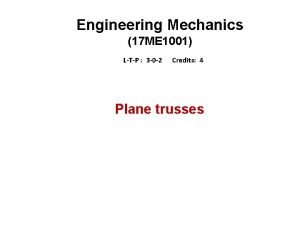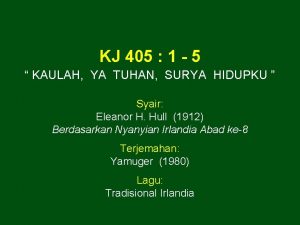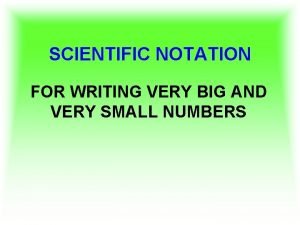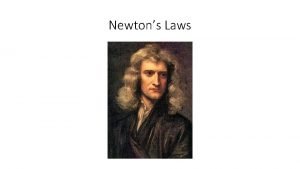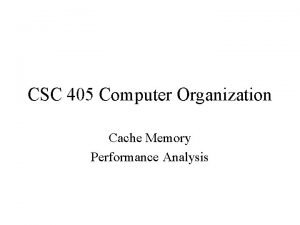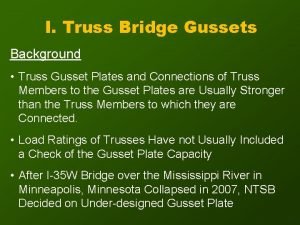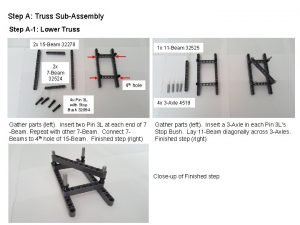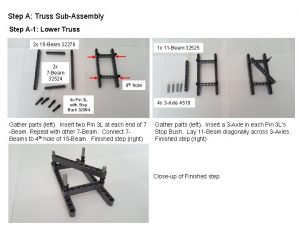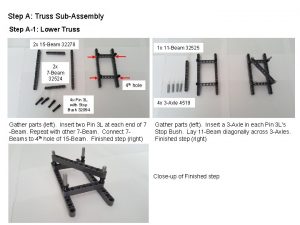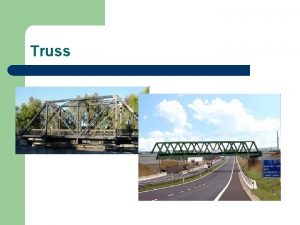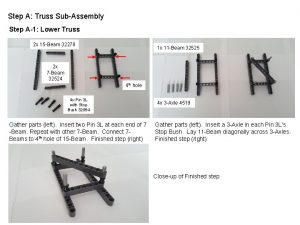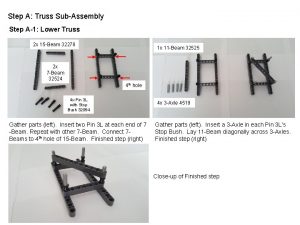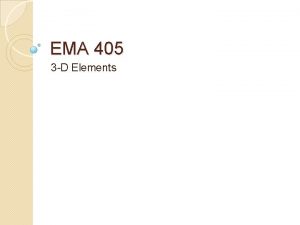EMA 405 Tips for Using Truss Elements in










- Slides: 10

EMA 405 Tips for Using Truss Elements in ANSYS

Truss Elements in ANSYS �We don’t really need to “mesh” a truss model �Just define nodes directly (Modeling/Create/Nodes/In Active CS) �All you need is one element per “line” in the truss model �Then create elements (Modeling/Create/Elements/Auto Numbered/Thru Nodes) �Apply boundary conditions and loads to nodes

Truss Element Types in ANSYS � Besides trusses, link elements are commonly used to model cable systems, springs (k=EA/L), and actuator arms. ANSYS has 5 link elements in its library. Link 1 – 2 D spar: Model must be completely in x-y plane Link 8 – 3 D spar Link 10 – Bilinear 3 D Spar: allows for the creation of tension only or compression only elements. Useful for modeling cables or contact only supports Link 11 – ANSYS calls this a linear actuator, but it can be thought of as a shock absorber as damping as well as spring stiffness is applied. Link 180 – 3 D finite strain spar: similar to link 8 but with improved nonlinear capabilities. The higher number indicates this is a newer element in the ANSYS family.

Post Processing �To get stresses in elements, go to: General Postproc/List Results/Element Solution and then Stress/Line Element Results

A Test Problem �E=200 GPa � =0. 27 �A=2 cm 2 �Use 2 -D spar element �Expected results: dmax (usum)=22. 2 microns; smax=2. 6 MPa 35 cm 50 cm F=300 N

Changing Element Properties �If you want to alter the properties of elements after they are created ◦ Create second set of properties (real constants, element type, material properties, etc. ) ◦ Then go to Modeling/Move or Modify/Elements/Modify Attrib �To check, go to List/Elements

A Slight Modification �Now switch “angled” bar to E=300 GPa and A=4 cm 2 �Expected Results: dmax=13. 4 microns; smax=1. 31 MPa

Getting Results From the Element Table � For line elements (links, beams, etc. ) the Element Table is used to access results data. The Element Table is different for each element, therefore, we need to look at the help file for LINK 1 or LINK 8 (Type help link 8 in the command line). From Table 8. 2 in the Help file, we can see that the stress (SAXL) can be obtained 1 using the item 'LS, 1‘, and the element load (MFORX) using ‘SMISC, 1”.

Element Table Continued • From the General Postprocessor menu select Element Table >Define Table • Click on 'Add. . . ' • Type in a label (I used stress) Scroll down through the items and select by sequence number Select LS and then type 1 after LS, and hit apply In a similar manner, add an entry for the element forces (SMISC, 1) These items may now be plotted or listed • •

Numbering and Load Labels • The numbers associated with the nodes and elements may be displayed using Plot Controls >Numbering. To show the material or real constant associated with each element, select that item from the Elem/Attribute scroll list. • The load and boundary condition labels can be refreshed by Plot Controls >Symbols and selecting all applied B. C. s
